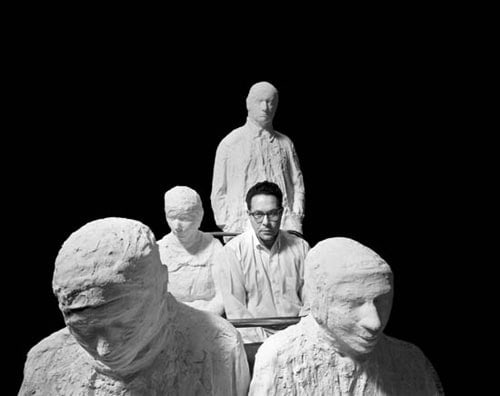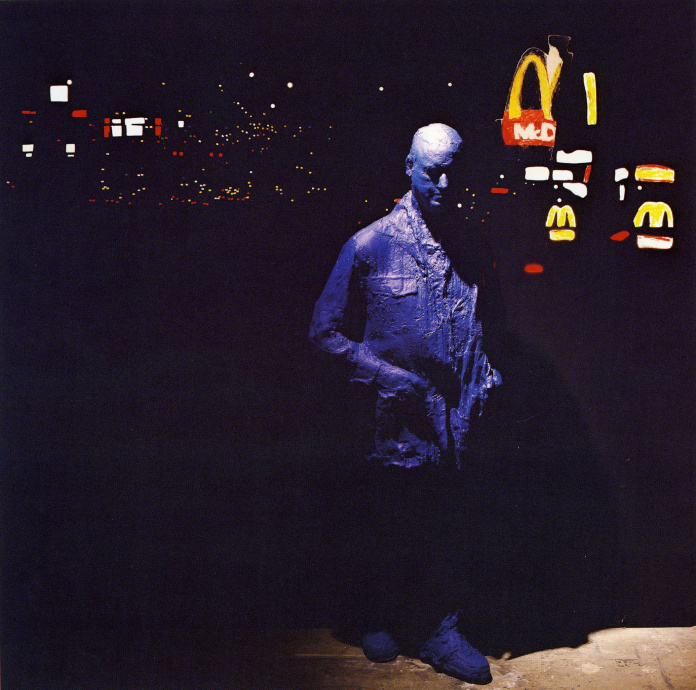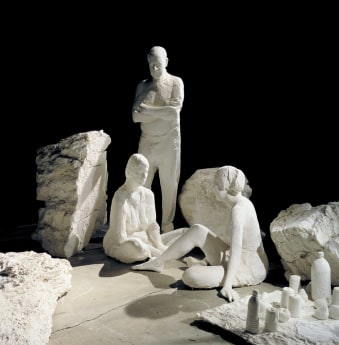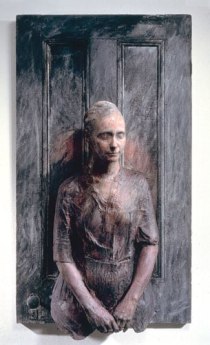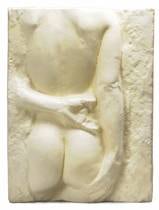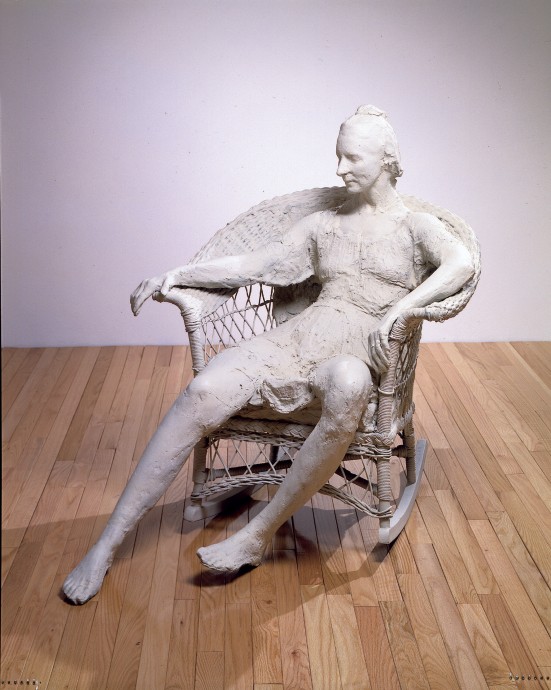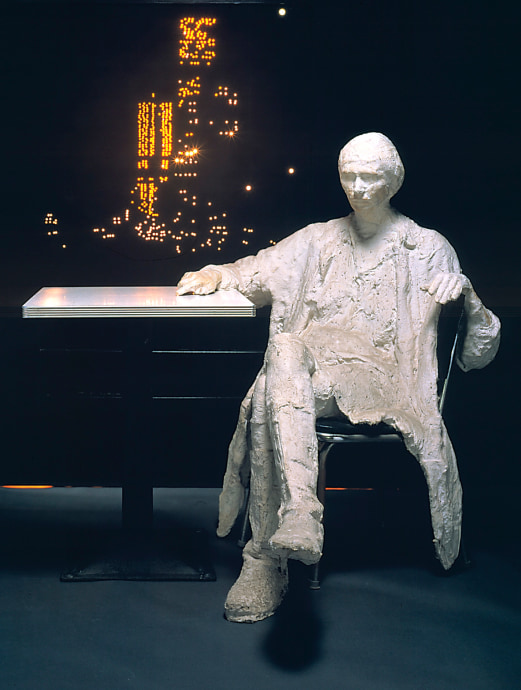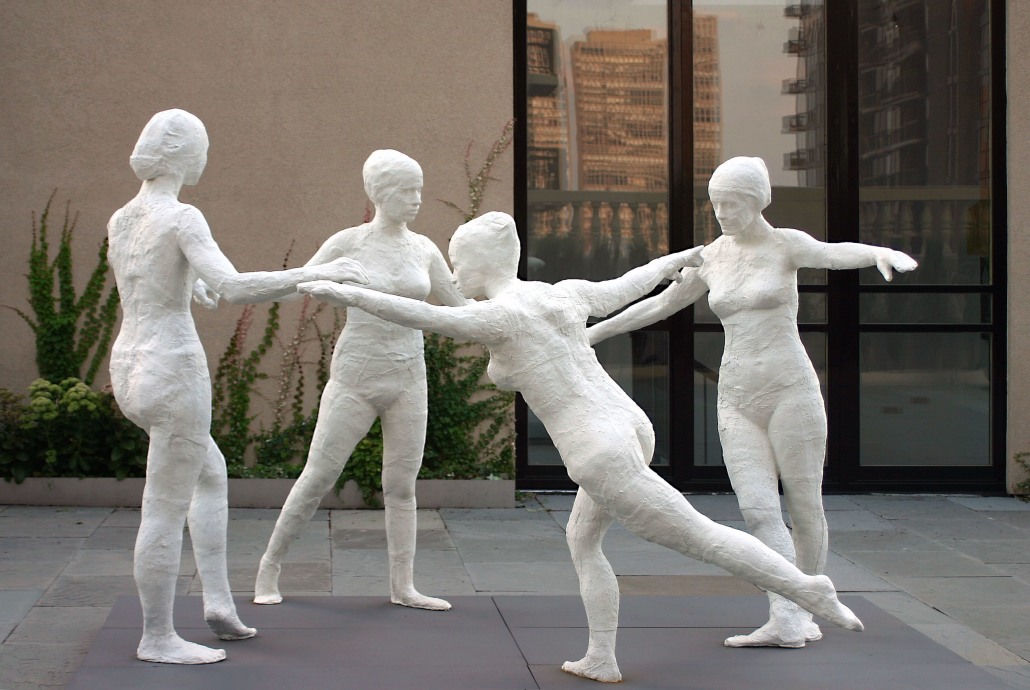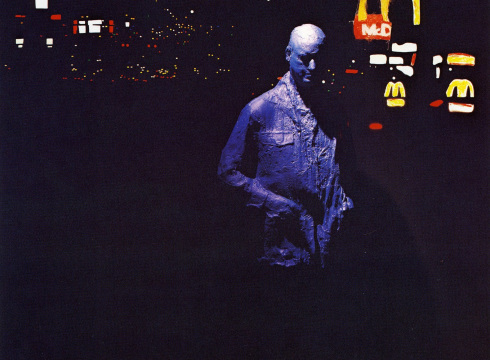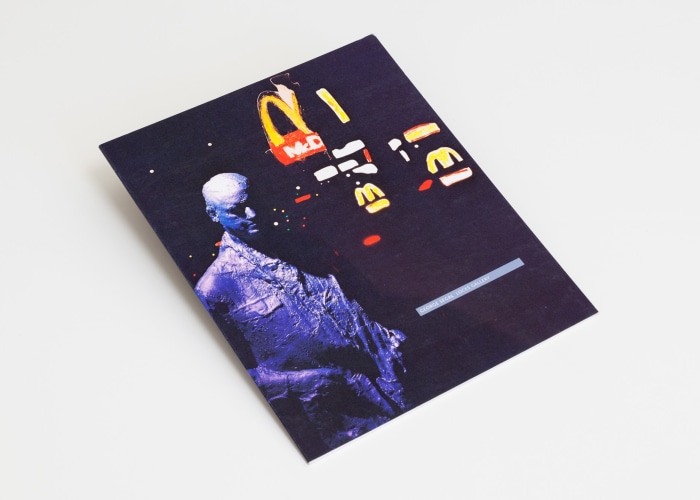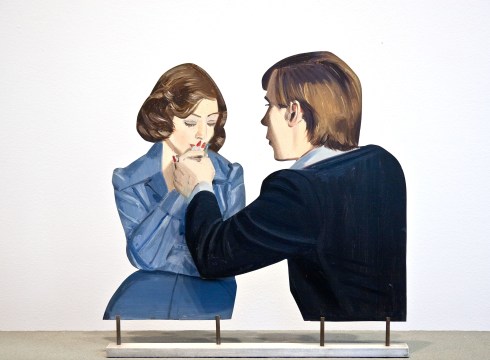
A painter and sculptor, George Segal (1924–2000) came to be recognized primarily for his life-size white plaster sculptures made from casts taken from living models which he began making in 1961. He is associated with Pop Art because of his references to mass culture and his appreciation of the relation between the fine arts and forms of popular art. However, his interest in rendering the human form made him a radical realist who reinvigorated classic modes of sculpture. His characters, white as ghosts, represented alone or in groups in association with objects, convey an impression of boredom and solitude. Due to the length of the model’s sitting for his life-casting, historians have noted the tension between their rigid pose and natural form, which adds to a heightened evocation of their psychology.
Born in New York, Segal’s parents ran a kosher butcher shop in the Bronx. Their working-class influence and the study of people in public social spaces became a strong influence on his figurative tableaux. He went on to study at Pratt, Cooper Union, and NYU, where he completed a degree in teaching in 1949. Segal eventually moved to South Brunswick, New Jersey to a chicken farm where he hosted a diverse range of artists from New York City and eventually converted into a studio to make many of his life-size figurative sculptures. He helped forge connections between Rutgers University professors and other active New York artists, hosting many of the first of what Allan Kaprow would dub “Happenings” at a 1957 picnic on Segal’s farm.
Segal’s prolific work is in the collections of more than 100 museums including the Whitney Museum of American Art, the Guggenheim Museum, the National Gallery of Art, the Museum of Modern Art, the Metropolitan Museum of Art, the Walker Art Center, the Philadelphia Museum of Art, the Hirshhorn Museum and Sculpture Garden, the National Museum of American Art, the Los Angeles County Museum of Art, the San Francisco Museum of Modern Art, and the Art Gallery of Ontario. His career was surveyed in a traveling retrospective in 1997–98 organized by the Montreal Museum of Fine Arts. In 1999, he received a National Medal of the Arts from President Clinton.



